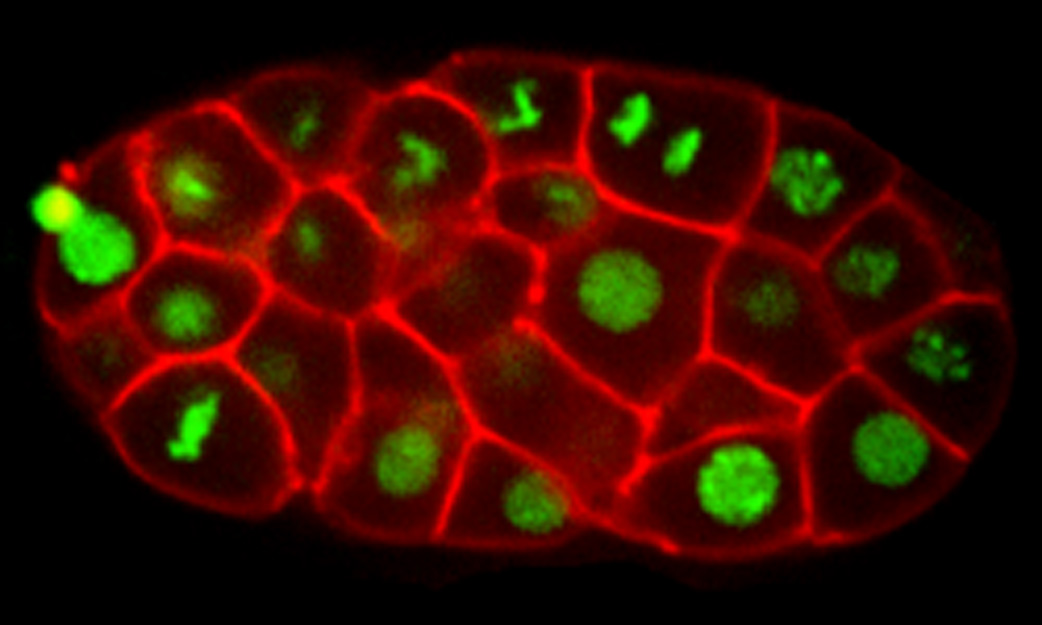CHAPEL HILL, NC – Roundworms and humans have more in common than you’d think. That’s why the first-ever integrated analysis of the molecular processes that control genome function in an animal has the potential to speed understanding of the molecular processes in human cells. A collaborative group of scientists across the world, including researchers at UNC, carried out the research.
“It’s like moving from a satellite view of a land mass to an on-the-ground perspective,” explains Jason Lieb, PhD, a senior author on the December 24 Science paper. Dr. Lieb is a professor of biology in the UNC College of Arts and Sciences, and director of the Carolina Center for Genome Sciences.
“And since the C. elegans worm genome is much smaller than but functionally very similar to a human’s, we make discoveries quickly and then translate our findings to humans.” Lieb is a member of UNC Lineberger Comprehensive Cancer Center.
The paper, titled “Integrative Analysis of the Caenorhabditis elegans Genome by the modENCODE Project,” was authored by Lieb and other members of the model organism ENCyclopedia Of DNA Elements (modENCODE) Consortium, which is funded by the National Human Genome Research Institute (NHGRI), part of the National Institutes of Health. A companion Science paper was published reporting findings of a similar study in the fruit fly (Drosophila melanogaster). In addition, more than a dozen companion modENCODE papers are published online in the journals Nature, Genome Research and Genome Biology.
The roundworm and the fruit fly genome sequences were initially sequenced alongside the Human Genome Project. Their sequences are routinely compared to the human genome sequence, in experiments that rely on millions of years of evolution. It turns out that particularly important stretches of DNA in the genome are “conserved,” or retained throughout evolutionary history. The distant evolutionary connection between flies, worms and humans is what makes research in these model organisms relevant to human biology.

“These findings will enable scientists everywhere to carry outexperiments in flies and worms to better understand the relationship between molecular and biological activities in these animals,” said NHGRI Director Eric D. Green, MD, PhD. “What we learn from these model organisms will contribute significantly to our understanding of health and disease in humans.”
Lieb studies chromatin, the protein superstructure that packages DNA and controls which sections of the genome are accessible to regulatory molecules that convert the genetic code into cellular action. ‘What we found was that the unique properties of the C. elegans chromosomes- for example the way their chromosomes behave during cell division and the way that their X chromosomes are regulated- gave us new insight about the functions of proteins that are conserved in humans.”
The researchers examined the organization and structure of chromatin in the cells throughout the life stages of each organism. Strikingly, both groups – those studying the worm and those studying the fly — discovered specific chromatin signatures associated with the regulation of genes in their respective organism. Unique chromatin signatures were associated with distinct regions of the genome that either turn genes on and off.
Other authors are from Cold Spring Harbor Laboratory, Cold Spring Harbor, N.Y.; Dana-Farber Cancer Institute, Boston, Mass.; European Molecular Biology Laboratory, Heidelberg, Germany; Fred Hutchinson Cancer Research Center, Seattle, Wash.; Harvard School of Public Health, Boston, Mass.; Lawrence Berkeley National Laboratory, Berkeley, Calif.; Max Planck Institute of Molecular Cell Biology and Genetics, Dresden, Germany; National Human Genome Research Institute, Bethesda, Md.; New York University, New York City, N.Y.; NimbleGen Systems, Madison, Wis.; Ontario Institute for Cancer Research, Toronto, Canada; Sloan-Kettering Institute, New York, N.Y.; Stanford University, Palo Alto, Calif.; State University of New York at Stonybrook; University of Toronto, Ontario, Canada; University of California- Berkeley, University of California- San Diego, University of California – Santa Cruz; University of Cambridge, Cambridge, UK; University of Michigan, Ann Arbor, Mich.; University of Washington, Seattle, Wash.; Vanderbilt University, Nashville, Tenn.; Weizmann Institute of Science, Rehovat, Israel; and Yale University, New Haven, Conn.
